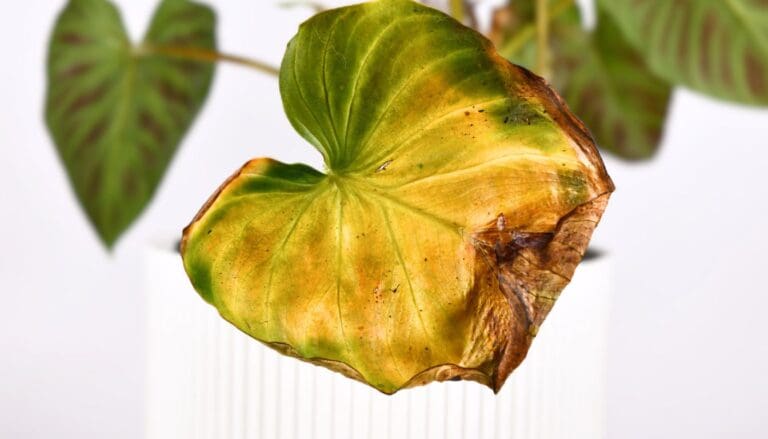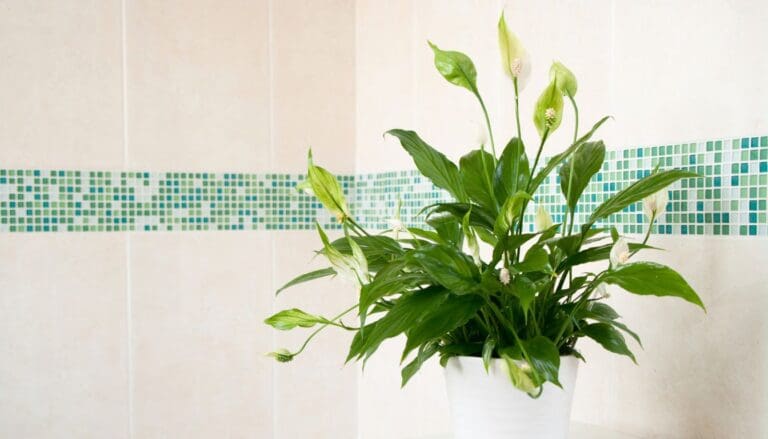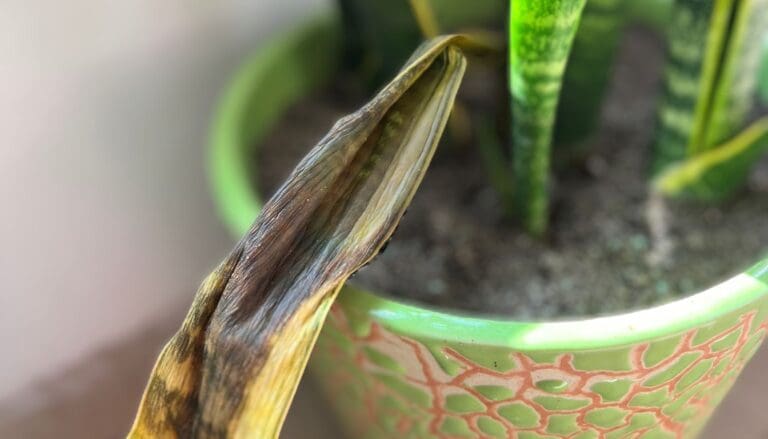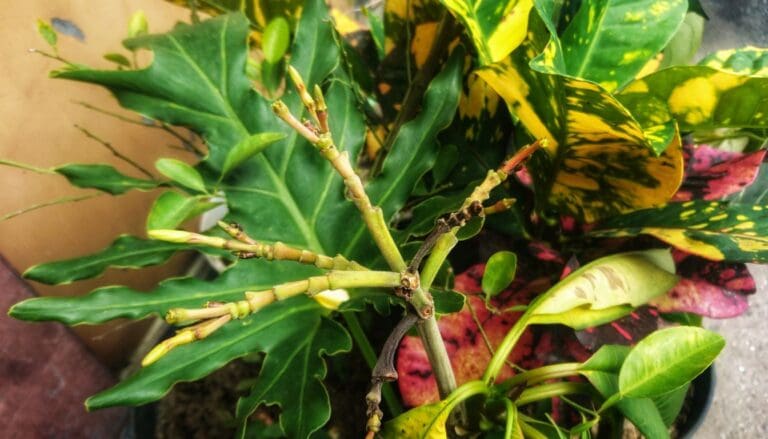Tips To Make ZZ Plant Grow Faster & Healthier
ZZ plant (Zamioculcas zamiifolia) is a hardy plant with long and thick compound leaves. This houseplant has gained popularity as it requires less maintenance and can survive in low light and with less water.
However, the slow growth of this plant often boggles the mind of many people. So today, let’s find out how fast do ZZ plants grow? What growth rate should you expect?
ZZ plants are slow-growing plants that can grow up to a height of two to three feet when grown indoors. If an appropriate environment is provided, they usually grow by one foot in a few years. Lack of nourishment, low humidity, and insufficient light can hinder the growth of the ZZ plant.
ZZ plants can survive some neglect. If you can provide the ideal conditions, it will grow to be a full and healthy plant within a few years.
But if you neglect it for too long, it might start developing problems, and the growth can slow down.
Let’s learn more about what slows down your ZZ plant’s growth and how you can make your ZZ plant grow faster.
Also read: Why is my ZZ plant dying? How to revive?
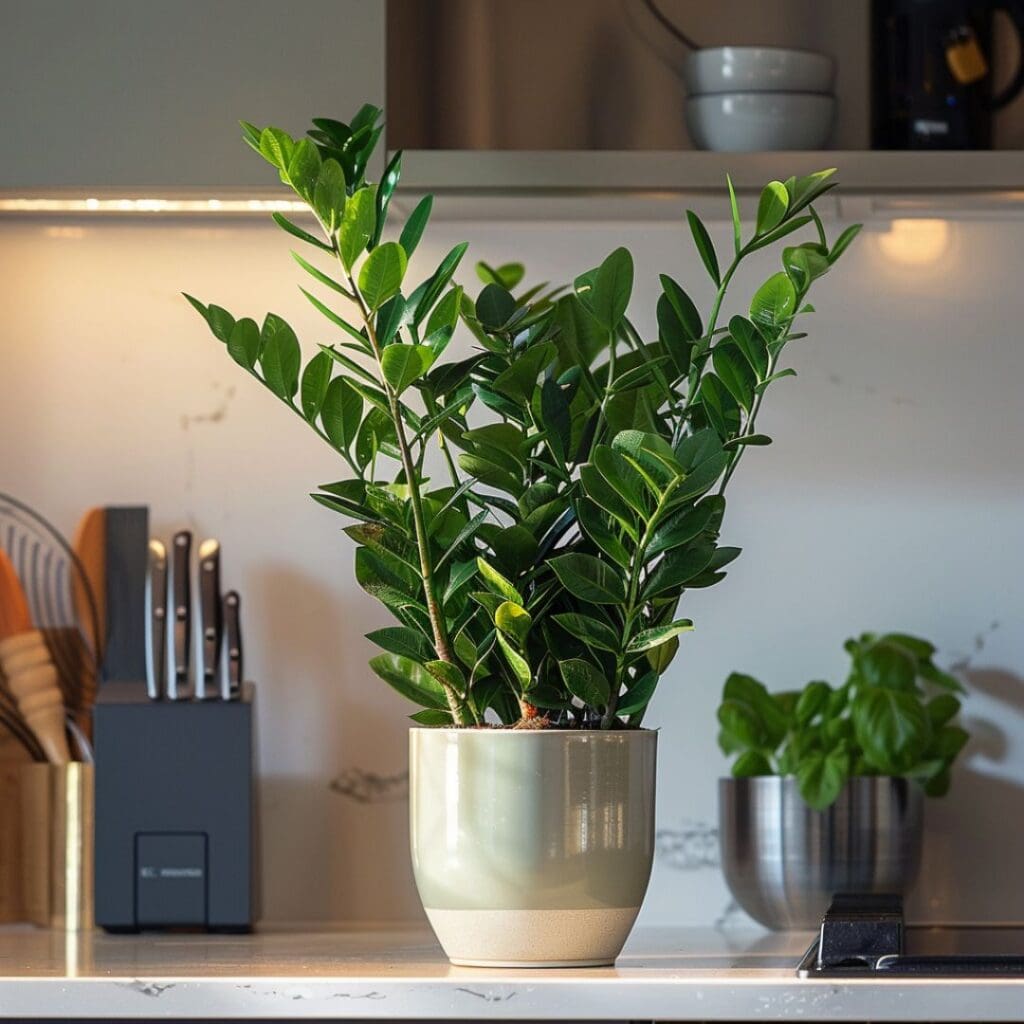
Please note: Simplify Plants is reader-supported. Some links in the post are affiliate links and I get a commission from purchases made through links in the post.
How fast do ZZ plants grow?
If you buy a ZZ plant with the expectation that it will grow large within a year, you are going to be disappointed.
You will have to understand that ZZ plants have their growth routine that might not match your expectations.
ZZ plants take time to grow. It can take years for your ZZ plant to show considerable growth. You might see a growth of just a few inches in a year.
There might be cases when you don’t see any growth in your ZZ plant even in a year!
There might be reasons why your ZZ plant is not growing. By identifying the problem and working on it, you’ll help your plant start growing finally!
Role of light
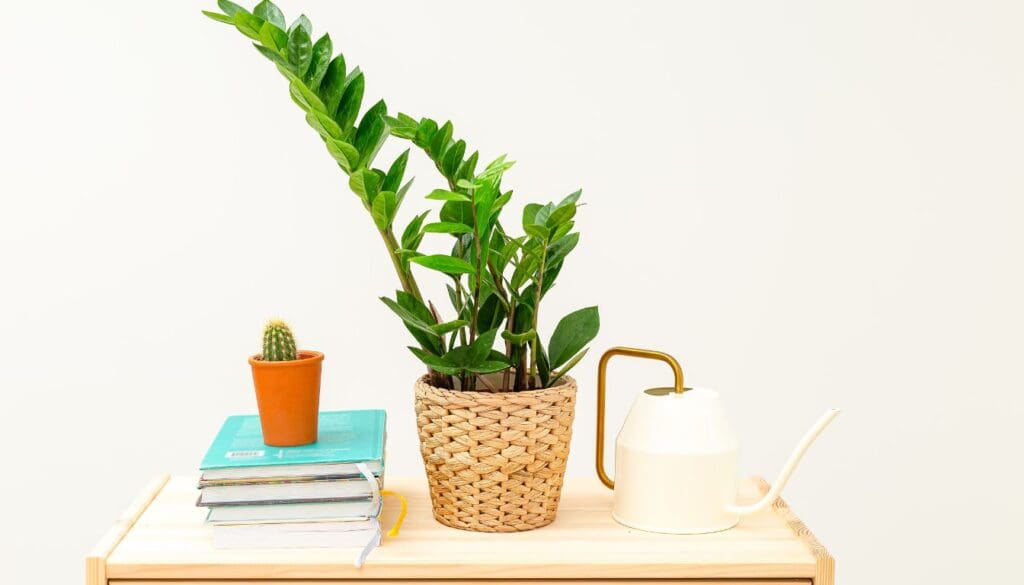
Light plays an important role when it comes to the growth of the ZZ plant. ZZ plants are not the usual kind of plants that love to bask under the sunlight.
ZZ plants can survive in low light, and that is why they will live wherever you place them. That is one factor that makes it a low-maintenance plant.
However, if you want to see your ZZ plant grow, you need to provide bright and indirect light to it. If you’ve not been doing this, you can consider a change, and you’ll see a difference in the growth rate of the ZZ plant.
ZZ plants get dry and burn out when placed under direct sunlight. So it is best to keep them in a place that doesn’t get direct sunlight or has a source of artificial light.
Also read: How much light do indoor plants need?
Soil lacks nutrition

Another significant aspect is nutrition. If the ZZ plant doesn’t get sufficient nutrition, it will have slower growth. Plants take in nutrition from the soil, so you need to have good soil to give enough nutrition to your ZZ.
If the soil is old and is not replaced over time, the ZZ plant will not get its required dose of nutrition.
ZZ plants grow slowly, but if you can occasionally add a good quality liquid fertilizer to the soil, you’ll have soil full of nutrients that your ZZ plant can utilize in its growth.
You can provide diluted liquid fertilizer to your ZZ plant once or twice a year during the growing season.
Remember, your ZZ plant will still follow its growth routine. But you can follow these steps to ensure that the plant is not having a nutrient deficiency, which will not hamper the growth.
Espoma Organic Indoor Liquid Organic Plant Food is an excellent fertilizer for your ZZ plant.
Also read: Can I grow indoor plants in garden soil?
Watering

Overwatering is a common problem in ZZ plants, and you might be making this mistake too. Leaves turning yellow and falling off is a sign that you are overwatering.
Overwatering damages the plant and makes the growth slow. It will take years for the plant to recover and start growing visibly.
Similarly, under-watering can also be harmful as the plant will start getting dry and start using all the energy in using the water and nutrients reserved in the rhizomes. It will not get a chance to work on its growth.
Water only when the soil is completely dry. You can water your ZZ plant once or twice a week. Make sure the pot has drainage holes to let the water drain away. Maintaining these will help the plant to grow further.
Use a moisture meter to determine the moisture level of the soil.
Also read: How long can your indoor plants live without water?
Pests

Look out for pest infestations in your ZZ plant. Pests such as aphids and spider mites can attack your plant, which will not let it grow.
It would help if you looked for these infestations. If the ZZ plant starts showing yellow spots, take a closer look. Aphids tend to blend in with the leaves.
You need to check under the leaves as aphids like to hide over there.
In the case of spider mite infestation, you will see spiderweb-like structures on your ZZ plant.
Using neem oil will keep the pests away from your ZZ plant. You can also remove pests by hand-picking the ones that you can see. And you can wipe the leaves with mild soap and hot water solution to remove the pests.
Also read: Do ZZ plant attract bugs? How to eliminate them?
Temperature
The ideal temperature for a ZZ plant is 65°F-75°F.
Freezing can kill the ZZ plant. If the temperature drops below 40°F, the plant will have a problem in surviving or growing, and you would need to protect your plant from the cold.
If your ZZ plant is not getting a temperature that is ideal for it, now you know it can be a reason for its slow growth.
Humidity
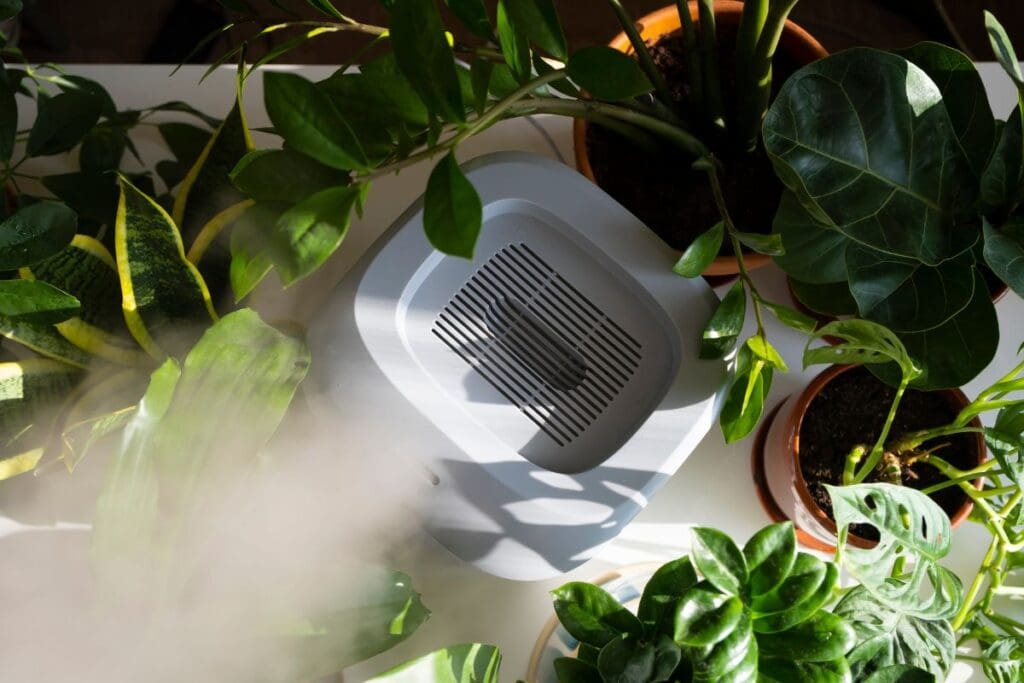
ZZ plants can thrive in a humid climate. Lack of humidity will slow down the growth of your ZZ plant.
During the winter months, the humidity drops, and the air gets very dry, which is a problem for your ZZ plant. An average humidity of 40% works well for the ZZ plant.
Misting the leaves of the ZZ plant a few times a week will help increase the plant’s humidity. Using a humidifier will also provide the required humidity to your plant.
How can I make my ZZ plant grow faster?

We have already discussed the problems that might be causing slow growth in your ZZ plant. Now let’s get an overview of how you can care for your ZZ plant so that it grows faster.
- Provide bright and indirect light
- Nutritional soil that supports well drainage
- Maintain temperature between 65°F-75°F
- Increase the humidity in the cold months
- Water once or twice a week
Provide bright and indirect light

ZZ plants are known for being able to survive in low light. But if you want to see growth in your ZZ plant, you have to give enough light to it.
You can place your ZZ plant near a window so that it gets enough indirect light.
You can also keep it near an artificial light, for example, the LED bulbs that are there in your house.
Please don’t place the ZZ plant in direct sunlight, thinking that it would help the plant grow. The leaves will get scorched and will turn yellow or brown.
Also read: How much light do ZZ plants need?
Nutritional soil that has good drainage
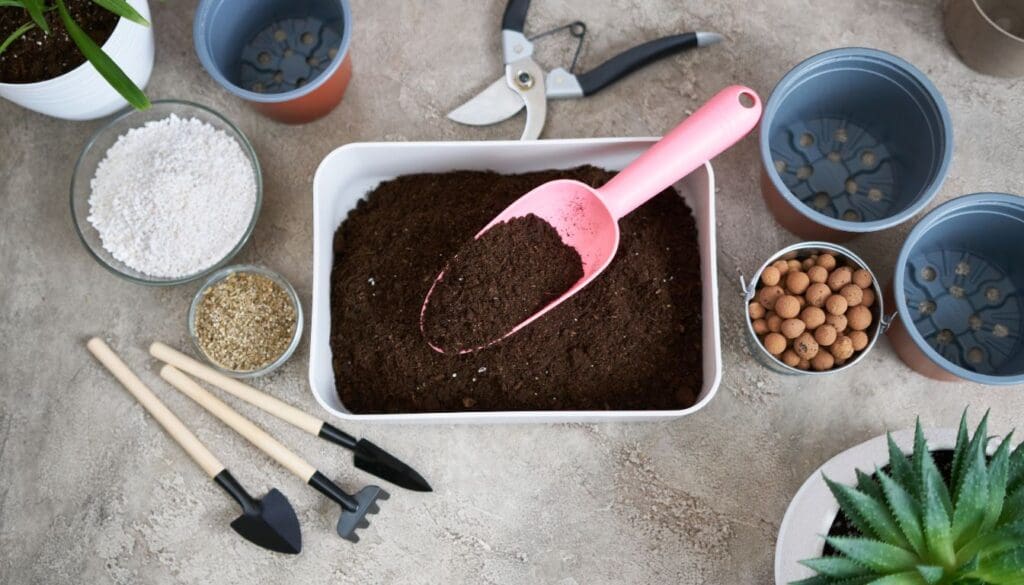
ZZ plants don’t have any special requirements when it comes to soil.
ZZ plants need soil that will be able to drain water and not retain it.
Retaining water can cause significant problems like root rot.
You can use regular potting soil and add bark, sand, or cactus mix to get the right texture suitable for the ZZ plant.
Plants take nutrients from the soil, so you must put fertilizer in the soil so that the ZZ plant gets all the nutrients it needs.
You should use a balanced liquid houseplant fertilizer with a proper nitrogen, potassium, and phosphorus ratio.
You should avoid giving fertilizer to your ZZ plant in the late fall or winter months, as that is the dormant period for your ZZ plant.
Also read: Do ZZ plants need fertilizer?
Maintain temperature between 65°F-75°F
ZZ plants thrive in temperatures between 65°F-75°F. The temperature might go below during the winter months, which can slow down your plant’s growth.
Be careful not to expose your ZZ plant to freezing temperatures as that would be harmful to the plant.
Note: Keep your ZZ plant away from air conditioning or heating vents.
Increase the humidity in winter

ZZ plants love the humid climate. In the winter months, the humidity lowers down, and the ZZ plant slows down the growth.
It would be best if you increased the humidity using any of these methods –
- You can build a pebble tray – Take a tray and fill it with small pebbles or stones. Fill the tray with water. Keep the ZZ plant on top of the tray. It will help the water to evaporate from beneath, providing extra humidity to the ZZ plant.
- Humidifier – Humidifiers are widely used in households. These devices help increase the humidity, and that will provide for the lack of humidity for your ZZ plant during the winter months.
- Misting – Occasionally spraying water on the ZZ plant leaves can help increase the humidity around your plant.
- Keep the plant in the bathroom – If your bathroom has enough indirect light, it might be the best place for your ZZ plant. The water coming out of the showers will provide humidity to the ZZ plant.
Also read: Should I mist my ZZ plant?
Water once or twice a week
ZZ plants don’t need water very often. But there are some things that you need to keep in mind while watering.
- Water only when the soil is completely dry.
- Check if the water is getting drained after you’ve watered the ZZ plant.
- Water once or twice a week.
- You can follow a watering schedule but be flexible with it.
- Don’t overwater, especially during the dormant season, as the water takes time to evaporate.
Also read: How often should I water my ZZ plants?
Final Words
It is great to see your plant grow. Don’t become impatient, as it can take a bit more time for the ZZ plants. Try to ensure that you are taking enough care and providing the ideal conditions for it to grow.
Recommended Garden Supplies
| Product Image | Our Recommended Gardening Supplies | Check Offers! |
|---|---|---|
Top Top
Top
Top
Top
Top
Top
Top
Top | rePotme Houseplant and Tropical Classic Potting Soil Mix | Check Offer On Amazon |
 Top
Top
Top
Top
Top
Top
Top
Top | Espoma Organic Indoor Plant Food | Check Offer On Amazon |
 Top
Top
Top
Top
Top
Top
Top
Top | GooingTop LED Grow Light 6000K Full Spectrum Clip Plant Growing Lamp | Check Offer On Amazon |
 Top
Top
Top
Top
Top
Top
Top
Top | Soil Moisture Meter | Check Offer On Amazon |
 Top
Top
Top
Top
Top
Top
Top
Top | Govee Hygrometer Thermometer, Bluetooth Enabled! | Check Offer On Amazon |
 Top
Top | LEVOIT Humidifiers for Large Room(Best For Plants) | Check Offer On Amazon |
 Top
Top
Top
Top
Top
Top
Top
Top | Upgraded DIY Automatic Drip Irrigation Kit, 15 Potted Houseplants Support | Check Offer On Amazon |
 Top
Top
Top
Top
Top
Top
Top
Top | Stainless Steel Heavy Duty Gardening Tool Set | Check Offer On Amazon |
 Top
Top
Top
Top
Top
Top
Top
Top | Bonide Insecticidal Soap | Check Offer On Amazon |
 Top
Top
Top
Top
Top
Top
Top
Top | Bonide 32 oz Spray Neem Oil for Organic Gardening | Check Offer On Amazon |
 Top
Top
Top
Top
Top
Top
Top
Top | Garden Safe Fungicide | Check Offer On Amazon |

